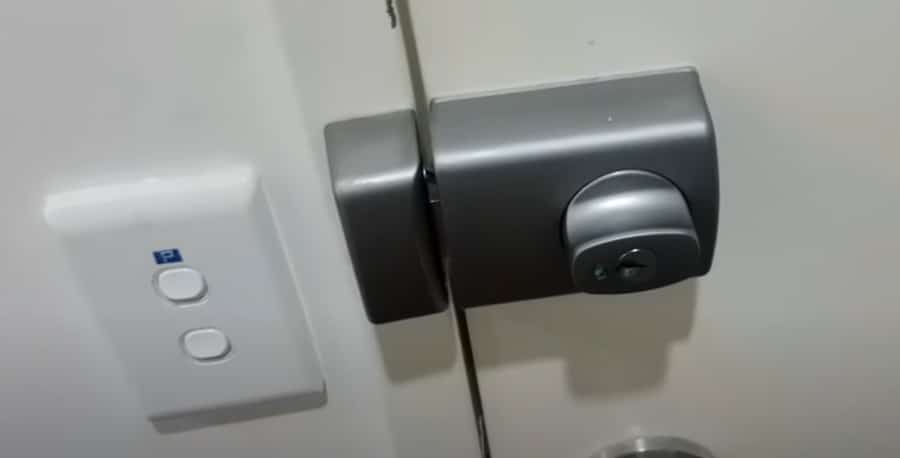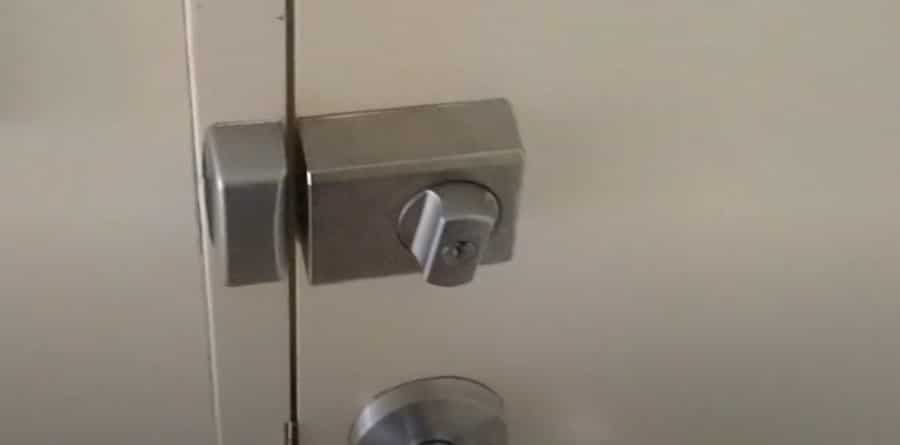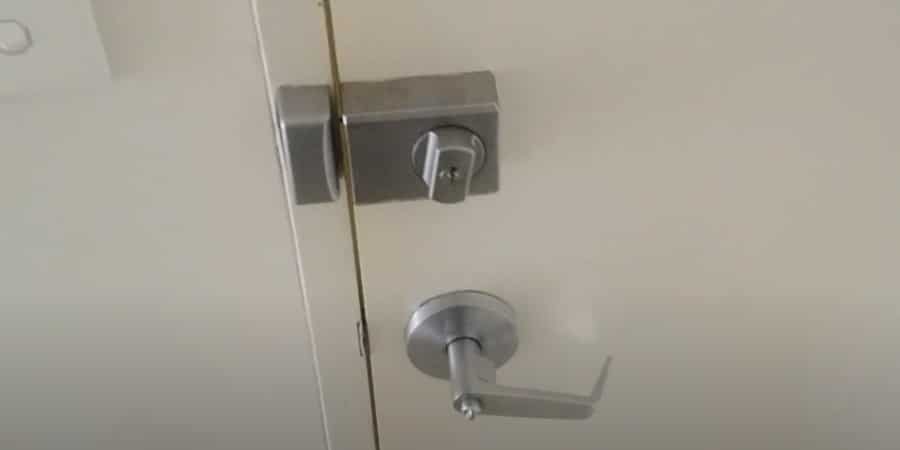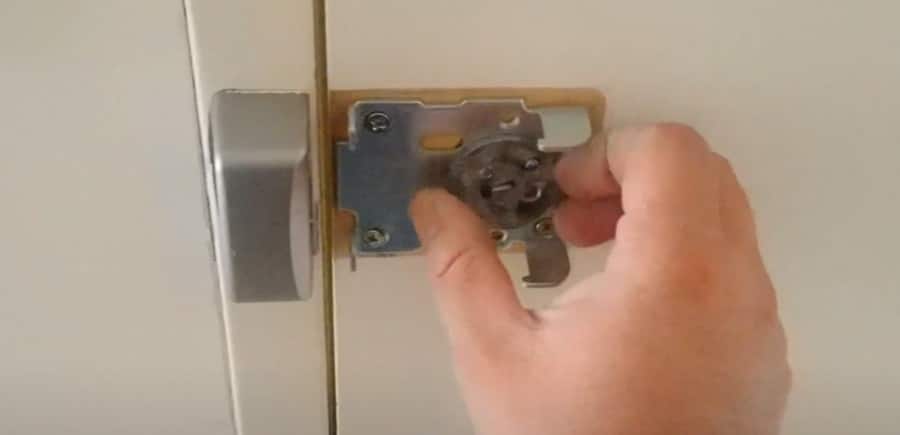A Professional Lockwood 001 Deadlatch Troubleshooting Guide
Discover effective solutions and tips to common Lockwood 001 Deadlatch issues with our expert Lockwood 001 Deadlatch troubleshooting guide.
The Lockwood 001 Deadlatch is popular for those seeking a secure and reliable locking system for their homes and businesses. However, as with any mechanical device, it can sometimes encounter issues that require troubleshooting.
This article will delve into some of the most frequent Lockwood 001 Deadlatch issues and offer practical solutions to help you maintain and troubleshoot your lock effectively.

Lockwood 001 Deadlatch Difficulty turning the key
If you’re having difficulty turning the key in a Lockwood 001 Deadlatch (or any other lock for that matter), Here’s a step-by-step guide to help you troubleshoot and potentially resolve the issue:
- Check the Key: Ensure you’re using the correct key. Sometimes, keys can look similar but belong to different locks. Examine the key for any signs of wear, bending, or damage. A worn-out key might not align correctly with the pins inside the lock.
- Lubricate the Lock: Over time, dust and grime can accumulate inside the lock, making it difficult to turn the key. Use a graphite-based lubricant or a specific lock lubricant. Avoid using oil-based lubricants like WD-40, as they can attract more dirt over time. Insert the key in and out of the lock several times after lubricating to help spread the lubricant.
- Check the Door Alignment: If the door is misaligned, it can pressure the latch or bolt, making it hard to turn the key. Ensure the door is properly aligned with the frame. You might need to adjust the hinges or strike plate to realign the door.
- Inspect the Cylinder: If you’ve tried the above steps and the key is still hard to turn, the lock cylinder itself might be damaged or worn out. In this case, you might need to replace the cylinder or the entire lock.
- Foreign Objects: Small foreign objects can get lodged inside the lock, though less common. If you suspect this, you might need the help of a locksmith to remove the obstruction safely.
Remember, forcing the key to turn can break the key inside the lock, complicating matters. Always use gentle, consistent pressure when trying to turn the key. If it doesn’t work, seeking a solution is better than risking further damage.
Lockwood 001 Deadlatch is not engaging properly.
If your Lockwood 001 Deadlatch is not engaging properly, there could be several reasons for this.:
- Check Door Alignment: Misalignment between the door and the frame can prevent the latch from engaging correctly. Ensure the door is properly aligned with the frame. The strike plate on the door frame should align perfectly with the latch. You might need to adjust or reposition the strike plate if it doesn’t.
- Inspect the Latch and Strike Plate: Check for any visible damage or wear on the latch and the strike plate. Over time, these components can wear out or become damaged, affecting their function. Ensure the latch bolt moves freely when you turn the handle or thumb turn. It might need cleaning or lubrication if it’s sticky or doesn’t move smoothly.
- Lubricate the Mechanism: Use a graphite-based or a specific lock lubricant to lubricate the latch mechanism. This can help if the latch is sticking or not moving smoothly.
- Check for Obstructions: Ensure nothing obstructs the latch from engaging, such as debris, paint, or other materials. Clean any obstructions you find.
- Adjust the Strike Plate: If the latch isn’t catching because it’s hitting the top or bottom of the strike plate hole, you might need to adjust the position of the strike plate slightly. Loosen the screws holding the strike plate, adjust its position, and then tighten the screws. Test the door to see if the latch engages properly.
- Inspect the Internal Mechanism: If the external components seem fine, there might be an issue with the lock’s internal mechanism. This is more complex and might require disassembling the lock. If you’re not comfortable doing this, consider seeking professional help.
- Consider Replacement: If the latch is damaged or worn out beyond repair, you might need to replace it or the entire lockset.
The key turns, but the Lockwood 001 latch does not retract
If the key turns in your Lockwood 001 Deadlatch, but the latch does not retract:
- Inspect the Latch: Ensure that the latch bolt is free from obstructions and moves smoothly when pushed in manually. It might need cleaning or lubrication if it’s sticky or doesn’t move smoothly.
- Lubricate the Mechanism: Use a graphite-based lubricant or a specific lock lubricant to lubricate the latch mechanism and the keyway. This can help if the latch or internal components are sticking.
- Check for Misalignment: Ensure the door is properly aligned with the frame. If the door is sagging or misaligned, it can pressure the latch, preventing it from retracting.
- Inspect the Internal Mechanism: If the external components seem fine, there might be an issue with the lock’s internal mechanism. This could be due to worn-out or broken parts. You can try disassembling the lock to inspect the internal components. Look for any broken or misaligned parts. If you’re not comfortable doing this, consider seeking professional help.
- Test with the Door Open: With the door open, try turning the key and observe if the latch retracts. This can help you determine if the issue is with the lock itself or if it’s related to the door’s alignment with the frame.
Remember, forcing the key or the latch can result in further damage. Always use gentle, consistent pressure when turning the key or retracting the latch. If it doesn’t work, it’s better to seek a solution than to risk causing more damage.
Difficulty locking or unlocking with the Lockwood 001 Deadlatch internal snib
If you’re experiencing difficulty locking or unlocking the Lockwood 001 Deadlatch using the internal snib (the thumb turn or lever on the inside of the door), Here’s a step-by-step guide to help you troubleshoot and potentially resolve the issue:
- Check Door Alignment: Misalignment between the door and the frame can cause the latch or bolt to bind, making it difficult to operate. Ensure the door is properly aligned with the frame. The strike plate on the door frame should align perfectly with the latch. You might need to adjust or reposition the strike plate if it doesn’t.
- Inspect the Snib Mechanism: Ensure the snib moves freely and isn’t obstructed or jammed. Check for any visible signs of damage or wear on the snib.
- Lubricate the Mechanism: The internal mechanisms can become dry or clogged with dirt and debris over time. Use a graphite-based lubricant or a specific lock lubricant to lubricate the internal parts of the lock, including the snib mechanism.
- Inspect the Internal Mechanism: If the snib is still hard to turn after lubrication, there might be an issue with the lock’s internal mechanism. This could be due to worn-out or broken parts. You can try disassembling the lock to inspect the internal components. Look for any broken or misaligned parts. If you’re not comfortable doing this, consider seeking professional help.
- Check for External Interference: Ensure nothing on the outside (like a second key) or inside (like debris) that might prevent the snib from operating correctly.
Lockwood 001 Deadlatch Safety release not working

.The safety release feature on the Lockwood 001 Deadlatch is designed to ensure that the lock can be easily opened from the inside, even if the key is left in the external cylinder. If the safety release isn’t working correctly, it can pose a safety risk, so addressing the issue promptly is crucial.
Here are some steps to troubleshoot and potentially resolve the problem:
- Inspect for Obstructions: Ensure the internal snib or thumb turn is not obstructing. Sometimes, items hanging on the door or nearby can interfere with its operation.
- Check the External Key: If a key is inserted in the external cylinder, try removing it and testing the safety release. While the safety release should work even with a key in the external cylinder, it’s worth checking to ensure it isn’t part of the problem.
- Lubricate the Mechanism: Internal mechanisms can become dry or clogged with dirt and debris over time. Use a graphite-based lubricant or a specific lock lubricant to lubricate the internal parts of the lock, including the safety release mechanism.
- Inspect the Internal Mechanism: If the safety release still does not function after lubrication, there might be an issue with the lock’s internal mechanism. This could be due to worn-out or broken parts.
- Adjust the Door Alignment: If the door is misaligned with the frame, it can affect the operation of the lock, including the safety release. Ensure the door is properly aligned with the frame and the strike plate aligns perfectly with the latch.
Remember, the safety release is crucial for ensuring safe egress from a property, especially in emergencies. If it’s not functioning correctly, addressing the issue immediately is essential.
If you cannot resolve the issue through these steps, consider consulting a professional locksmith for assistance. They will be able to diagnose and repair any issues with the Lockwood 001 Deadlatch, ensuring the lock functions correctly and provides the intended level of security for your property.
Lockwood 001 can’t unlock from outside.

If you’re experiencing difficulties unlocking your Lockwood 001 Deadlatch from the outside, follow these steps to identify and resolve the issue:
- Check the key: Ensure that the key you are using is the correct key for the lock. Try using a spare key if you have one, as your primary key may be worn or damaged. If the spare key works, consider having a new key cut.
- Lubricate the lock: The lock mechanism may be stiff due to dirt or lack of lubrication. Spray a lock lubricant or graphite powder into the keyhole and insert the key, turning it a few times to spread the lubricant evenly. Avoid using oil-based lubricants, as they can attract dirt and cause the lock to become sticky over time.
- Inspect the door alignment: If the door is misaligned with the frame, it can pressure the latch, making it difficult to unlock the door from the outside. Check if the door and frame are properly aligned, and adjust the hinges or use shims to correct the alignment if necessary.
- Internal snib position: Ensure the internal snib is not in the “lock” position. If the snib is engaged, the lock will not open from the outside, even with the correct key. If someone is inside the property, ask them to disengage the snib by turning it to the “unlock” position.
- Broken or worn internal components: If the key turns in the lock but the door still does not unlock, there may be broken or worn components inside the lock. In this case, it is recommended that you call a professional locksmith to diagnose and repair the issue.
Remember that forcibly attempting to unlock the door can damage the lock, key, or door further.
If you cannot resolve the issue using these steps, it is best to consult a professional locksmith for assistance. They will be able to identify the problem and provide the appropriate solution to ensure your Lockwood 001 Deadlatch is functioning correctly.
Lockwood 001 is not locking.

If your Lockwood 001 Deadlatch is not locking properly, follow these troubleshooting steps to identify and resolve the issue:
- Inspect the strike plate: Check the strike plate on the door frame to ensure it is properly aligned and not damaged. If the strike plate is misaligned, the deadlatch may not engage correctly. Adjust or replace the strike plate as needed.
- Examine the door alignment: If the door is not properly aligned with the frame, it can prevent the deadlatch from engaging. Check the alignment and make any necessary adjustments by tightening or loosening the hinges or using shims to reposition the door.
- Check the latch bolt: Inspect the latch bolt for any signs of damage or wear. It may prevent the lock from engaging if it is damaged or not functioning correctly. In this case, consider replacing the lock or contacting a professional locksmith for repair.
- Inspect the internal snib: Ensure that the internal snib is not stuck or jammed in the “unlock” position. If it is, try lubricating the snib mechanism with a lock lubricant or graphite powder to help it move more freely.
- Examine the lock cylinder: If the key turns but the lock does not engage, the lock cylinder or internal components may be damaged or worn. In this case, consult a professional locksmith to assess the lock and recommend the appropriate solution, including repair or replacement.
Conclusion
Understanding the common issues that may arise with your Lockwood 001 Deadlatch and troubleshooting them can significantly affect your lock’s performance and longevity. By following the guidance in this article, you’ll be better equipped to handle and resolve potential problems with your lock.

